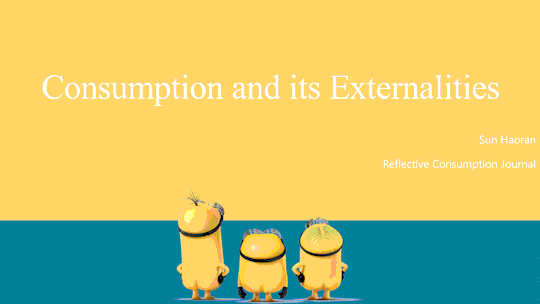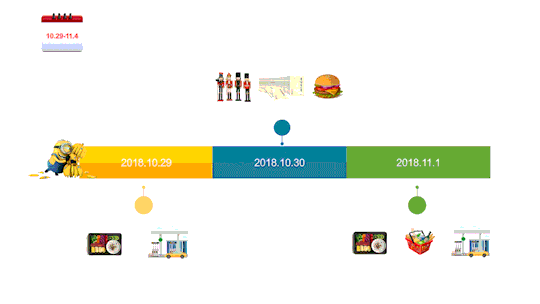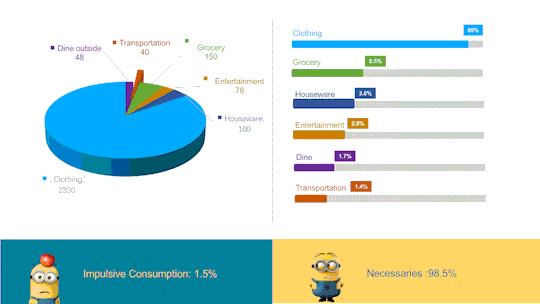Don't wanna be here? Send us removal request.
Video
youtube
Please see the video I produced for this assignment “ source of vigor”.
Reference
Mulvany, L. (2018, April) Impossible Foods’ Quest to Save the Planet Fails to Impress FDA
Retrieved from https://www.bloomberg.com/news/articles/2018-04-20/impossible-foods-quest-to-save-planet-draws-environmentalist-ire
Alexandratos, N. & Bruinsma, J. World Agriculture Towards 2030/2050: The 2012 Revision. (Food and Agriculture Organization of the United Nations, 2012).
Steinfeld, Henning, Pierre Gerber, Tom Wassenaar, Vincent Castel, Mauricio Rosales, and Cees De Haan. Livestock’s Long Shadow. (FAO Rome, 2006).
Capper, J. L. Is the Grass Always Greener? Comparing the Environmental Impact of Conventional, Natural and Beef Production Systems. Animals 2, 127–143 (2012).
Pelletier, N., Pirog, R. & Rasmussen, R. Comparative life cycle environmental impacts of three beef production strategies in the Upper Midwestern United States. Agric. Syst. 103, 380–389 (2010).
Mekonnen, M. M. & Hoekstra, A. Y. The green, blue and grey water footprint of farm animals and animal products. (UNESCO Institute for Water Education, 2010).
Sammons, N et al. Environmental Impact Reduction from Integration of Plant-Based Hamburger Production to Replace Animal Farming. Proceedings of the 2016 LCA Food Conference. Dublin (2016).
Palmer, Brian. 2015. The Speed Sweet Spot (NRDC). Natural Resource Defense Council. August 28. https:// www.nrdc.org/onearth/speed-sweet-spot.
Dietary Reference Intakes: Water, Potassium, Sodium, Chloride, and Sulfate: Health and Medicine Division. 2017. Accessed May 8, 2017. http://www. nationalacademies.org/hmd/Reports/2004/DietaryReference-Intakes-Water-Potassium-Sodium-Chlorideand-Sulfate.aspx.
0 notes
Text
Reflective Journal

The First Week

On 29 October, I went to Dewis the dining hall. I took much more than I could really finish, so I had to waste a few of them. On the next day, I bought some nutcracker toys for me. I already had some and I know actually I don’t need that many. However, I still bought another two impulsively, just for the different uniform they have. On that same day, my favorite novelist, master Zha Liangyong passed away. Master Zha’s novels peopled my youth and lit up my way into the publishing industry. While I suddenly realized I don’t have posses any novels of his, so I bought a collection (paper books) online to show my final respect to him.
The First Week Consumption Summary

At the end of this week, I began to recall my consumption behaviors of the week and figured out four damaging influences my behaviors could possibly lead to:

1. Unnecessary Kitchen Garbage. The kitchen waste can only be dumped into the landfill, or burned in an incinerator and then buried in a landfill. Either way, they both pollute the air, land, water, and change the climate. Burning the garbage will release the toxic up into the air, even worse, it can make new super toxic, like dioxin, which is the most toxic thing human-made substance know to science (00:17:13-00:17:44). In addition, what I did was also a waste of natural resources. In the past decade alone, one-third resource of the planet is consumed. If we continue to consume like this, we would need at least 3-5 planets, while unfortunately we only have one. (00:03:48-00:03:55). We are not the last generations in the world, and it is our responsibility to make the natural resources sustainable for our descendants to utilize.
youtube
2. Excessive CO2 Emissions. I refueled my car twice a week. I think I must be a great contributor to CO2 emission because I drove everywhere, even to the small playground close to my house. According to the vast majority of the scientific community, motor vehicle CO2 emissions, as part of the anthropogenic contribution to the growth of CO2 concentrations in the atmosphere, is causing climate change (Stocker, T.F… & Midgley P.M. (eds), 2013). According to the State of the Climate in 2017 report from NOAA and the American Meteorological Society, global atmospheric carbon dioxide was 405.0 ± 0.1 ppm in 2017, a new record high, indicating that the global temperature is exposed to more dangers of rising than ever before. If we want to stop climate change, what we individuals can do is really important, and I believe reducing the use of cars is one significant method.

CO2 Abundance (1986-2018)
3. Deforestation. We all know paper books are made of wood, and my consumption on books means there possibly would be more trees cut down. The estimate suggests that about 15 billion trees are cut down annually and about 5 billion are planted. In the 12,000 years since the start of human agriculture, the number of trees worldwide has decreased by 46% (Crowther et al., 2017). It is rather detrimental since the deforestation can lead to the bare soil drying out and result in erosion accelerated by the sun and wind, after this, the uppermost layer of soil, which is the most fertile, is blown as dust or washed away with rainwater that no longer sinks into the soil, but simply runs off immediately (Roorda, 2012). As a result, the more trees we lose, the more human beings will suffer. It is really urgent we take actions to stop that from happening.
4. Affluenza. As to the toys, actually, I don’t need to possess that many nutcrackers at all. The very nature of affluenza (a severe form of materialism) is the desire of having things that we really do not need, or acquiring more than we need, and thinking that it is acceptable to do so. It is true that many people may not realize the overabundance of material possessions can be detrimental. The obsession with consuming, of having more than what is needed, or having items that are not needed at all, is what often drives a wedge between an individual, their community, their family, and even their bank account. Moreover, research by Goldberg et al. (2003) shows that “parents who are more materialistic tend to have children who are more materialistic”. So I agree what Mattison says in the dissertation that it is a civic duty to holding individuals personally accountable for their behavior, primarily in the form of awareness, and conscientious consumerism (Mattison, 2012).
The Second Week

On 5th November, I had a hot discussion with my classmate, we are both super fans of <Game of Thrones>. But I realized that I have just watched the TV series, and never read one book, so I decided to buy one (eBook this time) and read when I have time. On 10th November, since winter is coming, I had to prepare some warm clothes for it, including 2 Canada Goose parkas. When I chose which parka I should buy, I thought of the discussion we had on 29th October, about the Canada Goose’s use of coyote furs. I feel pathetic for the coyotes, so I chose the one without their furs around the hood. Then it comes a horrible day: Single’s day. This is a shopping festival started by Alibaba, and it’s quite similar to the Black Friday in the US. On that day, many commercials have promotions to attract consumers to do more purchases. I failed to resist the temptation, so despite I made up my mind not to do impulse consumption again last week, I still bought some unnecessary toys and house decorations.
The Second Week Consumption Summary

Comparison

I made a little progress since last week, however, impulse consumption management needs to be better.
1. No unnecessary kitchen garbage. This week I took what I really demanded to eat, so I produced almost
2. Excessive CO2 emission. I feel sorry that I have to keep the bad habit of driving everywhere, cause it’s getting colder and I cannot ride.
3. Forest Protection. For the eco-friendly purpose, this time I bought an ebook. I hope I could help save the trees, even just one.
4. Affluenza. Lost in the commercial promotion and bought things I don’t really need impulsively again.
5. Animal protection. Canada goose has long been criticized for its use of coyote furs. Although no data shows that the population of coyote is endangered and some scientists even found that coyotes could withstand as much as a 70 percent yearly kill rate without suffering any decline in their total population (Floras, 2016), too much hunting or overuse of coyote furs can still possibly lead to coyotes’ extinction in the long run. When species die out, the consequences could be unexpected. When part of a breeding system or a food chain disappears, the entire ecosystem can be affected, with the result being that other species can also be extinct (Roorda, 2012). I chose the one without coyotes furs with the hope of doing some contributions to help prevent them from extinction.

Closing
Sustainability needs to be a daily preoccupation for all of us because our capacity to live sustainably begins with our existing environmental impacts and our modes of interaction with other people and society at large. Actually, there are much that individuals can, and should do in our daily life to help protect the sustainability of our planet: such as determining our use of energy and etc. By analyzing my consumption behaviors during the last two weeks, I believe I have a little bit contribution, although it is just a little. While still, it is not enough, what I should do better is focusing on how to do less impulse consumption.
Reference
Crowther, T. W., Glick, H. B., Covey, K. R., Bettigole, C., Maynard, D. S., Thomas, S. M., …& Duguid, M. C. (2015). Mapping tree density at a global scale. Nature. 7568, 201–205. doi:10.1038/nature14967
Floras, D. (2016). Stop Killing Coyotes.https://www.nytimes.com/2016/08/11/opinion/stop-killing-coyotes.html
Mattison, Merri. “Emancipation from affluenza: leading social change in the classroom.” Dissertation, Antioch University, 2012.
NOAA National Centers for Environmental Information, State of the Climate: Global Climate Report for Annual 2017. (2018). Retrieved on November 11, 2018 from https://www.climate.gov/news-features/understanding-climate/climate-change-atmospheric-carbon-dioxide
IPCC.( 2013). Summary for Policymakers. In: Climate Change 2013: The Physical Science Basis. Contribution of Working Group I to the Fifth Assessment Report of the Intergovernmental Panel on Climate Change. Stocker, T.F., Qin D., Plattner G. K., Tignor M., Allen S.K., Boschung J., … & Midgley P.M. (eds.). Cambridge: Cambridge University Press.
Priggen, E., & Fox, L. (Director). Story of Stuff. USA: Free Range Studios
#consumption journal#sustainability#eco-friendly#kitchen garbage#co2 emissions#deforestation#animal extinction#climate change
0 notes
Text
Electric Vehicles Boom Are Beneficial? Maybe Not
Introduction
Mulligan(2014) figures out in the book: An introduction to Sustainability: Environmental, Social and Personal Perspective that global climate change is indeed a “wicked problem” that cannot be resolved with particular, short-term responses (p. 4). Despite global efforts to stop climate change, the upward trend in the globally averaged temperature shows that the last three years were the hottest on record. Since 1901, the planet’s surface has warmed by 0.7–0.9° Celsius per century, but the rate of warming has nearly doubled since 1975 to 1.5–1.8° Celsius per century. Global greenhouse gas emissions reached a historic peak last year, along with the concentration of carbon dioxide in the atmosphere(Blunden J., Arndt D. S., Hartfield G., 2018).

youtube
Analysis
Since rising temperature can fry the world economy(Bloomberg Climate Changed, 2017), many corporates and investors have come to realize they should take proper measures against climate change. According to the vast majority of the scientific community, motor vehicle CO2 emissions, as part of the anthropogenic contribution to the growth of CO2 concentrations in the atmosphere, is causing climate change (Stocker, T.F… & Midgley P.M. (eds), 2013). Therefore, reducing CO2 emissions has become one shared goal of governments and corporates, and one their bet is on electric vehicles(EVs) that they believe have zero CO2 emissions.

Countries like Norway, France and U.K. have set deadlines to convert all new car sales to EVs (Bloomberg Quick take, 2018). As to corporates, according to Bloomberg New Energy Finance (BNEF), by 2040, more than half of new-car sales and a third of the global fleet—equal to 559 million vehicles—will be electric. By 2050, companies will have invested about $550 billion in home, industrial and grid-scale battery storage. Volkswagen says it will spend 81 billion dollars to develop electric versions of its models by 2030, while Volvo will begin to phase out gas-only gas in 2019 (Stringer, D., Ma J., 2018).

However, beneath the hoods of millions of the clean electric cars hitting on the roads will be a dirty battery, for many car manufactures are still making lithium-ion batteries in places with some of the most polluting grids in the world. According to Bloomberg NEF, there would be more than 10 million cars running on 60 kilowatt-hour packs by 2021, and most supply will come from places like China, Thailand, Germany and Poland that rely on non-renewable sources like coal for electricity (Rolander N., Starn J., Behrmann E., 2018). That is to say, while EVs are emission-free on the road, they still discharge a great deal of CO2 like conventional cars do: just to build each car battery would also emit much CO2 if it’s made in a factory powered by fossil fuels. Apart from that, there is one new problem coming: the first batches of batteries from electric and hybrid vehicles are hitting retirement age, how to deal with them environmentally would be a big issue. Not only do the batteries carry a risk of giving off toxic gases if damaged, but core ingredients such as lithium and cobalt are finite and extraction can lead to water pollution and depletion among other environmental consequences (Gardiner, J. 2017).
I think corporates can take actions from two perspectives generally: utilize alternative resources in the manufacture process to really reduce CO2 emission or at least be innovative to develop more fuel efficient systems. On the other hand, finding ways to reuse the batteries rather than just dump them is becoming quite urgent as the amount of EV batteries is forecast to exceed 3.4 million by 2025 globally, according to calculations based on Bloomberg NEF data. There are many car manufactures making great efforts already to solve those two questions come along with the proliferation of EVs, Tesla uses solar power at its Gigafactory for batteries in Nevada, and has plans for similar plants in Europe and Shanghai; a Chinese firm named Contemporary Amperex Technology Co. is also looking to power its future German plant with renewables (Rolander N., Starn J., Behrmann E., 2018). More than that, batteries can still collect and discharge electricity for another 7 to 10 years after being taken off the roads: like chilling beer at 7-Elevens in Japan, powering car-charging stations in California and storing energy for homes and grids in Europe. A clutch of renewable-energy storage suppliers—such as General Motors Co., BMW AG, Toyota Motor Corp., BYD Co.—are also trying to create aftermarkets and generate second lives for those “ retirees” (Stringer, D., Ma J., 2018).

Closing
While EVs are supposed to be the future of auto industry for its “ seemingly eco friendly” features, they have hidden problems. In my point of view, since finding alternative resources to produce batteries may take too much innovative cost and efforts for corporates to get things settled in the near future, car manufactures-especially those not efficiently funded enough-should better focus more on recycling and making full use of the retired batteries in their first golden years after being taken off the road. Only when the issues talked about are solved can they really do help to stop climate change and the environmental sustainability.
Reference
Bloomberg Climate Changed (2017.4.22). How Rising Temperatures Can Fry the Economy. Retrieved from https://www.youtube.com/watch?v=EsHgFKLynmc
Bloomberg Quicktake (2018.9). China Could Soon Become the Detroit of Electric Cars. Retrieved from https://www.youtube.com/watch?v=XgvWh_VbTW8&t=1s
Flavelle, C., (2018). Climate Change Will Get Worse. These Investors Are Betting on It. Retrieved from: https://www.bloomberg.com/news/articles/2018-10-08/climate-change-will-get-worse-these-investors-are-betting-on-it
Gardiner, J., (2017) . The rise of electric cars could leave us with a big battery waste problem. Retrieved from: https://www.theguardian.com/sustainable-business/2017/aug/10/electric-cars-big-battery-waste-problem-lithium-recycling
IPCC.( 2013). Summary for Policymakers. In: Climate Change 2013: The Physical Science Basis. Contribution of Working Group I to the Fifth Assessment Report of the Intergovernmental Panel on Climate Change. Stocker, T.F., Qin D., Plattner G. K., Tignor M., Allen S.K., Boschung J., … & Midgley P.M. (eds.). Cambridge: Cambridge University Press
NOAA National Centers for Environmental Information, State of the Climate: Global Climate Report for Annual 2017. (2018). Retrieved on October 26, 2018 from https://www.ncdc.noaa.gov/sotc/global/201713
Stringer, D., Ma J., (2018). Where 3 Million Electric Vehicle Batteries Will Go When They Retire. Retrieved from: https://www.bloomberg.com/news/features/2018-06-27/where-3-million-electric-vehicle-batteries-will-go-when-they-retire
0 notes